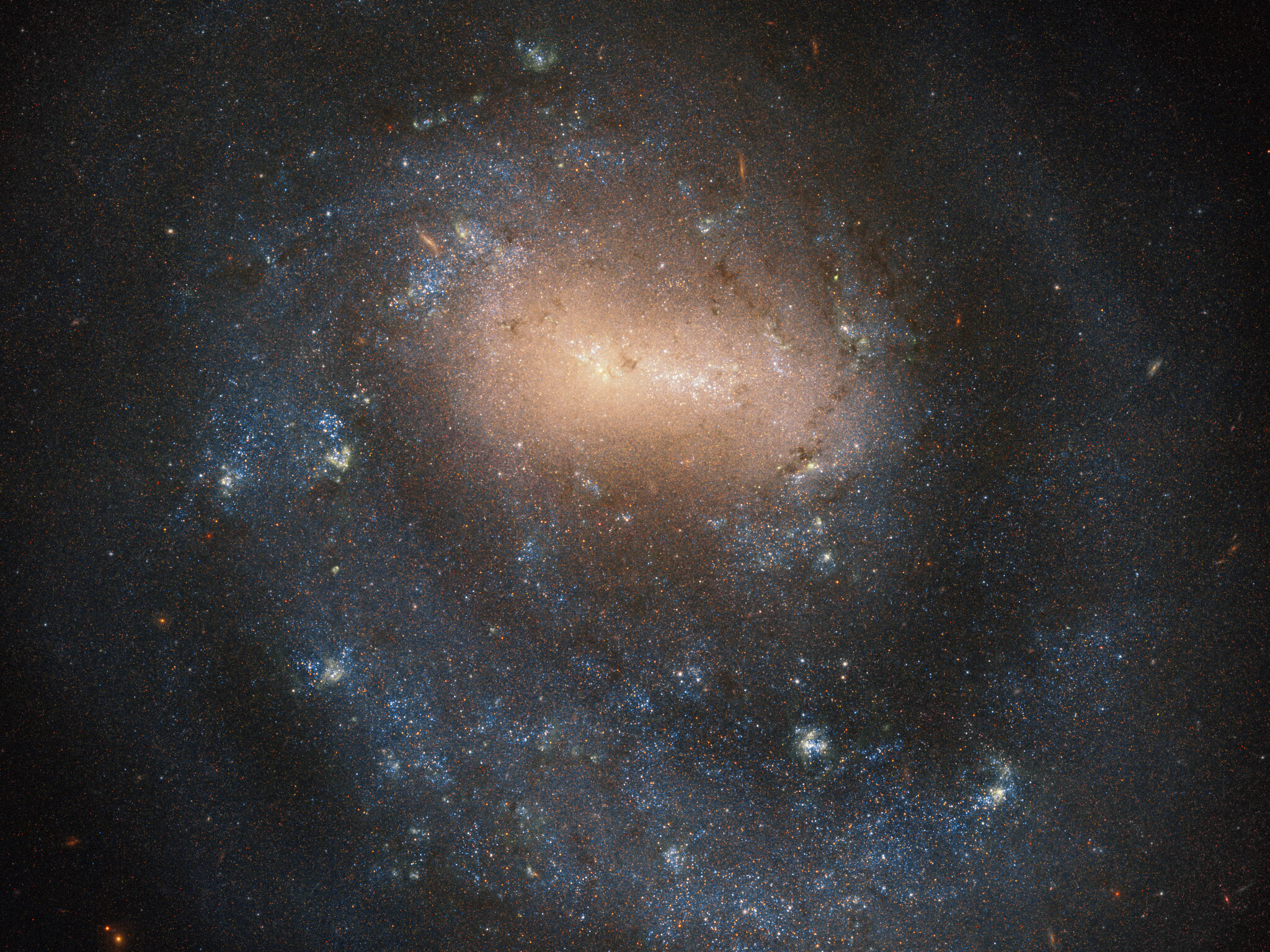NGC 4618 was discovered on April 9, 1787, by the German-British astronomer William Herschel, who also discovered Uranus in 1781. Only a year before discovering NGC 4618, Herschel theorized that the “foggy” objects astronomers were seeing in the night sky were likely to be large star clusters located much farther away than the individual stars he could easily discern.
Since Herschel proposed his theory, astronomers have come to understand that what he was seeing was a galaxy. NGC 4618, classified as a barred spiral galaxy, has the special distinction among other spiral galaxies of only having one arm rotating around the center of the galaxy.
Located about 21 million light-years from our galaxy in the constellation Canes Venatici, NGC 4618 has a diameter of about one-third that of the Milky Way. Together with its neighbor, NGC 4625, it forms an interacting galaxy pair, which means that the two galaxies are close enough to influence each other gravitationally. These interactions may result in the two (or more) galaxies merging together to form a new formation, such as a ring galaxy.
Text credit: ESA (European Space Agency)
Image credit: ESA/Hubble & NASA, I. Karachentsev
1787年4月9日,德英天文学家威廉·赫歇尔发现了NGC 4618,他在1781年也发现了天王星。就在发现NGC 4618的前一年,赫歇尔提出了一个理论:天文学家在夜空中看到的“雾蒙蒙的”物体很可能是大型星团,其位置比他能轻易分辨的单个恒星要远得多。
自从赫歇尔提出他的理论以来,天文学家们逐渐认识到他所看到的是一个星系。NGC 4618被归类为棒状螺旋星系,它与其他螺旋星系的特别之处在于,只有一个螺旋臂绕着星系中心旋转。
NGC 4618距我们的银河系约2100万光年,位于金星星座,其直径约为银河系的三分之一。和它的邻居NGC 4625一起,它形成了一个相互作用的星系对,这意味着这两个星系足够近,在引力上相互影响。这些相互作用可能导致两个(或更多)星系合并形成一个新的星系,比如环状星系。
文字来源:ESA(欧洲航天局)
图片来源:ESA / Hubble和NASA,I。Karachentsev







